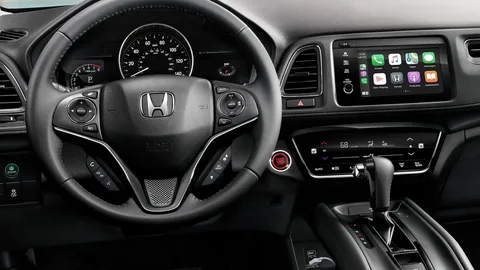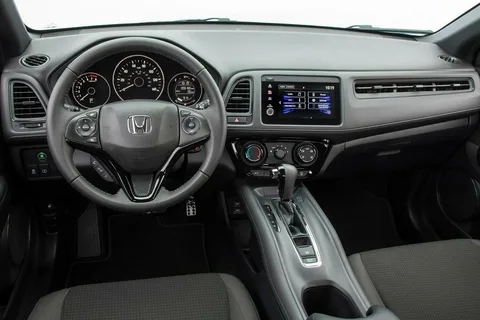Breathing easy is a priority for many of us. But what if the air inside your home could be cleaner and cleaner? Fortunately, there is a solution: the HRV System. In this blog post, we’ll explore how HR-V Systems can help improve air quality in your home, from the basics of how the system works to the health benefits it can bring. We’ll also provide tips on getting the most out of your HR-V System so you can breathe easy knowing you are making the right choice for your family’s health.
What is an HR-V system?
An HR-V System, or Heat Recovery Ventilation system, is a revolutionary technology designed to improve indoor air quality by providing fresh and clean air while conserving energy. It is a system that works by exchanging heat between the incoming and outgoing air streams, thereby ensuring that the air entering your home is filtered and purified.
In simple terms, an HR-V System extracts stale air from inside your home and replaces it with fresh air from outside. This process involves using two separate ducting systems – one for the outgoing air and one for the incoming air. These ducts are connected to a central unit responsible for transferring heat between the two air streams.
Using an HR-V System, you can say goodbye to stagnant air, odors, and harmful pollutants lingering in your home. The system helps remove excess moisture, dust, allergens, and other airborne contaminants, making your indoor environment healthier and more comfortable.
Why is Indoor Air Quality Important?
Indoor air quality is crucial for our overall health and well-being. We spend a lot of time indoors, whether at home, work, or school. Therefore, the air we breathe indoors directly impacts our respiratory health.
Poor indoor air quality can lead to various health issues, including allergies, asthma, respiratory illnesses, and even more severe conditions. Dust mites, pet dander, pollen, mold spores, and other allergens can easily accumulate indoors if proper ventilation is not in place. Additionally, volatile organic compounds (VOCs) emitted from household cleaners, paints, and furnishings can pollute indoor air.
By prioritizing indoor air quality, we can reduce the risk of these health issues and create a healthier living environment for ourselves and our loved ones. An HR-V System plays a vital role in achieving this goal by continuously bringing fresh outdoor air and removing stale indoor air. This exchange of air helps to dilute and eliminate contaminants, ensuring that the air inside our homes is clean, fresh, and safe to breathe.
How does an HR-V System Work?
An HR-V System, also known as a Heat Recovery Ventilation system, is a remarkable technology that works wonders to improve indoor air quality while conserving energy. But how exactly does it work?
In simple terms, an HR-V System extracts stale air from inside your home and replaces it with fresh air from outside. This process involves two separate ducting systems – one for the outgoing air and one for the incoming air – connected to a central unit. The central unit is responsible for transferring heat between the two air streams.
The heat transfer is what sets an HR-V System apart. As the outgoing air passes through the HR-V System, it releases heat energy to warm the incoming fresh air. This exchange of heat helps maintain a comfortable temperature inside your home while reducing the energy needed to heat or cool the air.
Additionally, an HR-V System uses filters to remove harmful pollutants, allergens, and other airborne contaminants from the incoming air. These filters ensure that the air entering your home is clean, fresh, and safe to breathe.
Benefits of an HR-V System for Indoor Air Quality
Many of us prioritize Improving indoor air quality, and an HR-V System can be the perfect solution. Investing in an HR-V System can benefit you, contributing to a healthier and more comfortable living environment.
One of the main benefits of an HR-V System is the reduction of allergens and pollutants in your home. The system filters out dust, pollen, pet dander, and other harmful particles, ensuring clean and fresh air. This is especially important for individuals with allergies or respiratory conditions, as it can help alleviate symptoms and improve overall well-being.
In addition to removing allergens, an HR-V System also helps to control excess moisture in your home. Excessive moisture can lead to mold growth and the presence of harmful bacteria. By ventilating your home with fresh outdoor air, the HR-V System helps prevent moisture buildup, creating a drier and healthier indoor environment.
Furthermore, an HR-V System can create a more comfortable living environment by regulating temperature and humidity. The system transfers heat between incoming and outgoing air streams, reducing the need for additional heating or cooling. This saves energy and ensures that your home stays cozy in the winter and cool in the summer.
Factors to Consider when Choosing an HR-V System
When choosing an HR-V System for your home, several important factors must be considered. The first is the size of the system. Choosing an HR-V System that is properly sized for your home is crucial to ensure maximum efficiency and effectiveness. If the system is too small, it may not be able to ventilate your home adequately, and if it’s too large, it may use unnecessary energy.
Another factor to consider is the noise level of the system. While most HR-V Systems are designed to operate quietly, some may produce more noise than others. If you’re sensitive to noise or plan on placing the system in a living area, choosing one with a low noise level is important.
Energy efficiency is also an important consideration. Look for an HR-V System with a high energy efficiency rating to ensure it doesn’t contribute to high energy bills. Energy-efficient models often have features such as heat recovery coils and programmable settings to optimize energy usage.
Maintenance and upkeep of an HR-V system
Maintaining and keeping your HR-V System in optimal condition is essential for ensuring that it continues to provide you with clean and fresh air year after year. Here are some important maintenance tips to keep in mind:
- Regularly clean or replace filters: The filters in your HR-V System play a crucial role in removing airborne contaminants. Depending on the type of filter, it may need to be cleaned or replaced every few months. Be sure to follow the manufacturer’s instructions to ensure proper maintenance.
- Clean the exterior vents: Over time, debris and dirt can accumulate on the exterior vents of your HR-V System. This can obstruct airflow and decrease the efficiency of the system. Regularly inspect and clean the vents to ensure unrestricted airflow.
- Check the heat recovery core: The heat recovery core is a key component of your HR-V System. It is responsible for transferring heat between the incoming and outgoing air streams. Inspect the core periodically and clean it if necessary to maintain its efficiency.
- Monitor the moisture levels: Excessive moisture can lead to mold growth and other issues. Keep an eye on the moisture levels in your home and adjust the HR-V System accordingly to ensure proper ventilation and humidity control.
- Schedule professional maintenance: Having your HR-V System professionally serviced annually is a good idea. A trained technician can thoroughly inspect and clean the system and identify any potential issues before they become major problems.
Installation process for an HVAC System
Once you’ve chosen the perfect HR-V System for your home, it’s time to install it. While hiring a professional HVAC System technician for the job is recommended, it’s still helpful to understand the general steps involved in installing an HR-V System.
The first step is to determine the optimal location for the HRV unit. This is typically in a central area of your home, such as the basement or utility room. Once the location is decided, the technician will install the necessary ductwork to connect the HRV unit to the air supply and return vents in your home.
Next, the HRV unit itself is installed. This involves mounting the unit securely to the wall or ceiling and connecting it to the ductwork. The technician will also ensure the unit is properly wired and connected to the power source.
Once the unit is in place, installing the external vents is next. These vents allow fresh air to be drawn into the system and stale air to be expelled. The technician will carefully position and secure the vents on the exterior of your home, ensuring proper airflow and ventilation.
FAQ’s
1. Can I install an HRV System, or do I need to hire a professional?
Hiring a professional HVAC technician to install your HR-V System is highly recommended. They have the necessary knowledge and experience to ensure proper installation and optimal performance.
2. How often do I need to clean or replace the filters in my HR-V System?
The frequency of filter maintenance depends on the type of filter and the manufacturer’s recommendations.
3. Can an HR-V system reduce energy consumption in my home?
Yes, an HR-V system can help reduce energy consumption in your home. Transferring heat between incoming and outgoing air streams helps maintain a comfortable temperature without relying solely on heating or cooling systems. This can lead to energy savings and lower utility bills.
4. Will an HR-V system make my home colder in the winter or hotter in the summer?
No, an HR-V system is designed to maintain a comfortable temperature in your home year-round. It transfers heat between incoming and outgoing air streams, helping regulate temperature and preventing excessive heat loss or gain.
Conclusion
An HR-V system is a game-changer for improving indoor air quality. Constantly bringing in fresh, filtered air while removing stale air helps create a healthier and more comfortable living environment. With its ability to reduce allergens, control moisture levels, and regulate temperature, an HR-V System is a must-have for any home. So don’t hesitate to invest in this innovative technology and breathe easy knowing that you’re taking a big step towards a healthier lifestyle for yourself and your family.

